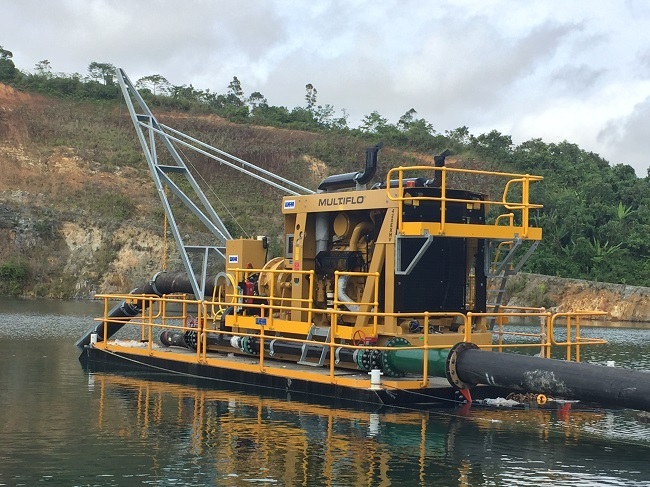Understanding your net positive suction head
The available net positive suction head (NPSHa) is the static pressure you have available in a system to force the water into the pump; it largely determines what type of pump is best suited to your application.
NPSH can be affected by a number of variables, for example:
- The static differentiation between a pump's suction and the water level.
- The length of the suction pipeline.
- The Inside Diameter (ID) of the suction pipeline.
- The type of suction pipe (e.g. rubber, HDPE, steel, etc.).
- The pump's elevation above sea level.
- The temperature of the fluid.
- The specific gravity (SG), among other factors.
Every pump has a minimum required NPSH (NPSHr) to ensure continuous flow, which depends on its operating duty point.
NPSHa must always be more than NPSHr, typically with a 1-1.5m safety margin to prevent suction cavitation.
Weir Minerals dewatering specialists can work with you to calculate these values and help determine which pump is best suited to your application.
What are you pumping?
The demands on a pump transporting clear liquid are substantially different to those moving slurry or tailings, from both an energy and wear perspective. Therefore, it's essential to understand the chemical composition of the liquid being dewatered.
Multiflo® dewatering pumps can handle clear, corrosive liquids efficiently, while GEHO® positive displacement pumps have been designed to handle slurries with high solids content or corrosive properties. Moreover, PD pumps also provide reliable, efficient long-distance transport, which means they're well suited to operations with long pipelines or deep underground mines.
For higher solids applications requiring a high head, Warman® DWU horizontal dewatering pumps offer robust wear life and have a number of sealing options to reduce the dilution of the slurry and lower the required flow of gland water.

Multiflo® MF diesel-driven pump unit operating at a customer site in Indonesia
Are you working underground?
With typical underground mine dewatering systems, pumping stations are progressively added as the mine goes deeper. This means that the capital costs increase incrementally, while the operational costs accumulate over the life of mine (LOM).
With this in mind, the question is: At what depth does a single lift PD pump system become more feasible than a multistage centrifugal pump system?There are many factors to consider because increased depths mean:
- More pumping stations.
- Greater complexity.
- A higher influx of coarse particles.
As a result, there's a higher likelihood that something may go wrong, leading to unplanned downtime and expenses.
Taking all these factors into account and assuming the LOM is more than, say, five years, based on the work Weir Minerals has done in the past, as the depth increases it begins to make economic sense to consider replacing multistage centrifugal dewatering systems with single lift GEHO® PD pumping system.
When you need a self-priming pump
Manually primed pumps require regular, time-consuming adjustment. It's a process that's prone to failure and can lead to inefficient operation if air isn't correctly removed from the pump.
While some static dewatering applications can make do with a manually primed pump, more dynamic applications benefit from an automatic vacuum priming system that prevents the pumps from losing prime.
Multiflo® self-priming CF and RF pump models use a "ball float" controller for the vacuum priming system, which is designed to quickly and efficiently lift the water up into the priming tank. The ball float controllers function is to monitor the vacuum tank fluid level to ensure the pump remains primed at all times. It requires no adjustment and operates independently of the vacuum compressor, removing the inefficiencies and hazards of air prime.
Should you use diesel or electric driven dewatering pumps?
Electrically driven pumping systems are dependent on the availability of an adequate electrical distribution system on-site. For this reason, most electrically driven applications are in a fixed position. Generally speaking, electric pump systems are simpler to operate and quieter, as well having lower associated maintenance and energy costs.
On the other hand, diesel pumps are typically used when the dewatering pumping system needs to be more mobile to accommodate unplanned on-site water management issues. In remote locations, where adequate electrical infrastructure is not available or if the site experiences rapidly changing mine conditions, diesel driven pumping system provide operational flexibility.
ABOUT THIS COMPANY
Weir
With world class engineering expertise, Weir works in partnership with our mining customers to solve their operating challenges safely, efficiently and sustainably.
CONTACT DETAILS:
- Website: http://www.global.weir/
- Email: https://www.global.weir/contact-us/


























